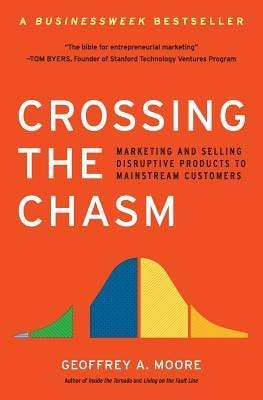Clarity and Discovery Through Value Positioning Statements
A product marketing and management template helping organizations better define and communicate their value proposition could help you in life – both for communication, and discovery
Geoffrey Moore's Value Positioning Statement is a product marketing and management template that helps organizations define and better communicate their unique value proposition. It involves highlighting the key benefits, target audience, and differentiation from the competitors.
In his book Crossing the Chasm (Moore, 186), Geoffrey outlines a 6-piece template that highlights target customer and their need, value proposition, and key differentiators from competitors. This template got famous as Geoffrey Moore’s Value Positioning Statement, and is available in different variations. Below is the original.
For (target customer—beachhead segment only)
Who are dissatisfied with (the current market alternative)
Our product is a (product category)
That provides (compelling reason to buy).
Unlike (the product alternative),
We have assembled (key whole product features for your specific application).
Value Positioning Statements in Life
Geoffrey Moore’s Value Positioning Statement can be repurposed for better understanding and explaining the value in changing something in life – whether we’re communicating the value to others, or clarifying to ourselves.
FOR (a person, myself, or us as a group)
WHO ARE DISSATISFIED WITH (the current situation, solution, behavior)
(suggested change) PROVIDES (desired outcome, compelling solution, or value)
BY (key description, concept and clarification)
For illustration, let’s take a couple challenge, but note that the value positioning statement can be used for internal dilemmas as well.
My partner and I have ad hoc arguments about daily things (e.g. dirty dishes), which we don’t resolve, but also don’t listen to each other during arguments as they happen ad hoc while the other person might be busy.
The value positioning statement could look like this:
For us as a couple
Who are dissatisfied with having ad hoc arguments and not listening to each other
purposefully taking time to have discussions provides space and opportunity to hear each other properly
by removing distractions and heat of the argument
Value Positioning Statements for Discovery
Value positioning statements are by their nature great for communicating the value and desired outcomes. This is especially useful for group challenges or getting buy-in from people. For example, the statement above could be used to get my partner to try out setting time aside for discussions. However, working with these statements can be a great tool for discovery.
We don’t necessarily need to know the solution or suggested change (bullets 3 and 4) right away, and the process could be turned upside down. Without already knowing the resolution, I can fill in the first two bullets to better understand the situation, reason(s) for dissatisfaction, and space for improvement.
Going back to our example:
For us as a couple
Who are dissatisfied with having ad hoc arguments and not listening to each other
(suggested change and desired outcome)
(key description, further expanding or clarification)
Starting the exercise without knowing the solution portion becomes a discovery process rather than communicating the solution. We can look at the challenges, and focus on desired outcomes, then potential solutions.
We are not happy with the outcome of our ad-hoc arguments. How we will achieve the desired outcome and what is the solution is part of the discovery.
Setting aside time for discussions is just one of the solutions to choose from. There could be many more. For example, we could introduce a keyword to snap back from the heated argument or have an agreement to decide on the spot if we can focus right now or park it to discuss in the evening every time there’s an ad hoc argument.
In this way, value positioning becomes a discovery tool, as we build backward from challenges, desired outcomes, and opportunities, rather than getting stuck on (not knowing) the exact solution right away.
Once the way forward is discovered, this tool will help us communicate to others and clarify to ourselves, which is its original purpose, and something that can help us get buy-in and alignment, or commit and stick to the plan.
Moore, Geoffrey A. Crossing the Chasm, 3rd Edition: Marketing and Selling Disruptive Products to Mainstream Customers. Harper Business, 2014




